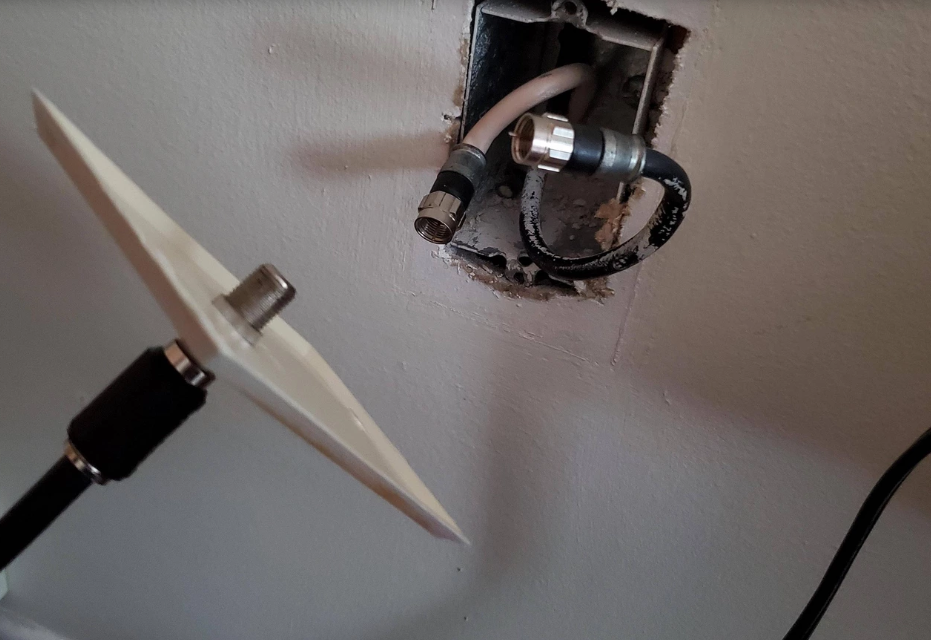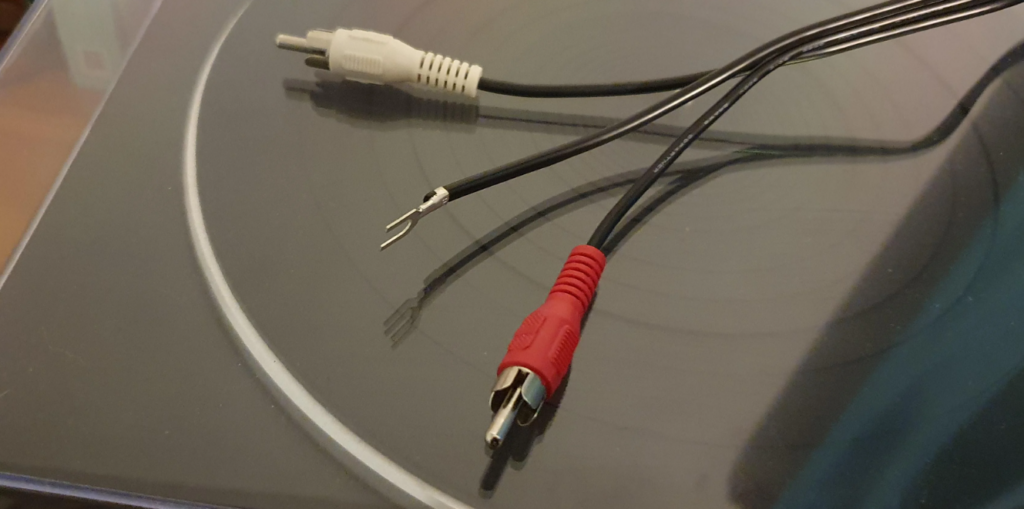AudioReputation is reader-supported. When you buy through links on our site, we may earn an affiliate commission Learn More
When it comes to audio the debate between RCA and Coaxial cables has been ongoing for ages like the timeless argument between vinyl and digital. Both types of cables play a role in connecting sound systems ensuring that audio signals are transmitted smoothly from one device to another.. Which one truly reigns supreme in terms of delivering superior sound quality?
The choice of cable can greatly impact the audio experience. It’s not about linking point A to point B: it’s about guaranteeing a flawless and pure journey between the two. The right cable can be the difference between a dull sound and an immersive high quality audio performance.
RCA cables, featuring their red and white connectors have been a mainstay in audio setups for decades. On the other hand, Coaxial cables, distinguished by their single thicker design are newer players in the field but have rapidly gained popularity—particularly in digital audio configurations.
As we delve deeper into this comparison it’s vital to understand that choosing between RCA and Coaxial isn’t solely a matter of tradition versus modernity. It involves considering aspects such as nuances in transmission resistance, against interference and overall fidelity of the audio output.
Lets dive in and discover which cable truly resonates with audiophiles.
Table of Contents
Background and Basics
1. RCA Cables

History and Origin
The RCA cable, named after the Radio Corporation of America, has a history dating back to the 1940s. Originally designed to connect phonographs to amplifiers, it quickly became a choice for audio and video applications. Manufacturers and consumers alike appreciate its design featuring iconic red, white (and sometimes yellow) connectors.
Typical Uses in Audio Setups
RCA cables have found use in various audio setups ranging from connecting turntables to amplifiers to linking CD players, tuners, and other audio components to receivers. They are also versatile enough for home theaters, where they transmit both composite video signals. The distinct split channels. Red for right audio, white or black for left audio, and yellow, for composite video. Make them easily recognizable and user-friendly.
2. Coaxial Cables

History and Origin
Coaxial cables (often referred to as ‘coax’) were invented in the 1880s but gained significant popularity during the 20th century.
The design of cables involves a central conductor that is surrounded by an insulating layer, which is then protected by a conducting shield and an outer insulating layer. This construction gives these cables their name. Offers excellent protection against external interference.
Typical Uses in Audio and Other Setups
Coaxial cables have applications beyond just audio setups. In the field of audio, they are commonly used to transmit audio signals between devices, ensuring a cleaner transfer compared to analog cables. In addition, audio coaxial cables are widely used in television setups to connect antennas, satellite dishes, and cable systems to TVs. Their robust design makes them suitable for high-speed internet connections and other data transmission tasks. The ability of cables to transmit multiple channels over a single cable has made them an essential component in modern digital setups.
Physical Differences
1. RCA Cables
Design and Structure:
RCA cables are known for their simplicity and effectiveness. They consist of two conductors: a central conductor responsible for carrying the audio or video signal (usually made of copper) and an outer shield that acts as both a ground and provides protection against interference.
The cable is then covered with a layer of insulating material usually made of rubber or plastic. This layer protects the wires and allows for flexibility. The ends of the RCA cables have connectors that are made of metal and designed to fit into RCA jacks.
Color-coded Connectors and Their Significance:
One of the recognizable characteristics of RCA cables is their color coded connectors. These colors serve as a guide for users to ensure connections:
- Red: Represents the right audio channel. In setups this channel usually delivers sound to the right speaker.
- White or Black: Indicates the left audio channel directing sound to the left speaker in stereo configurations.
- Yellow: Used for video. When both audio and video are transmitted through RCA cables the yellow connector carries the video signal.
The color coding system simplifies the setup process making it easier for those unfamiliar with audio and video equipment to make accurate connections. By following this color guide, users can avoid issues related to phase or incorrect placement of channels, thus ensuring sound and video quality.
2. Coaxial Cables
Design and Structure:
- Coaxial cables, also commonly known as ‘coax,’ have an intricate design compared to RCA cables.
- A coaxial cable is composed of layers, each with its specific purpose:
- Central Conductor: Usually made of stranded copper, this part carries the signal, whether it is audio, video, or data.
- Dielectric Insulator: Surrounding the conductor, this layer provides insulation to the signal. It ensures that there is no loss or interference caused by the surrounding layers.
- Shield: This shield can be in the form of a braid, foil, or a combination of both. Its main role is to protect against interferences like electromagnetic and radio frequency interferences.
- Insulating Layer: Made from rubber or plastic materials, this layer safeguards the internal components of the cable against physical damage and environmental factors.
Shielding and Its Significance:
The shielding in cables plays a crucial role as it addresses one of their most important aspects. Due to their design with the signal-carrying conductor at its core, these cables are susceptible, to interferences that can distort and degrade signal quality.
The metallic shield, often composed of copper, aluminum, or a mix of both materials, acts as a barrier. It not only prevents external signals from penetrating into the cable but also ensures that the cable’s own signal remains contained within it by minimizing any outward radiation. This dual function guarantees an uninterrupted transmission of signals.
In end coaxial cables, you might even come across double or triple shielding. This additional protection is especially beneficial in environments with a lot of interference, ensuring that the signal remains pure and undistorted.
Also Read: DAC vs. Amp – What Are the Differences?
Factors Affecting Sound Quality
Transmission of Signals
1. How RCA and Coaxial Cables Transmit Signals:
Both RCA and Coaxial cables are designed to transmit signals but they do so in slightly different ways. RCA cables, being analog transmit signals as varying voltages that correspond to the amplitude of the sound wave. The continuous change in voltage represents the change in the audio waveform. On the hand, Coaxial cables, particularly when used in digital setups transmit signals as a series of 0s and 1s that represent the audio data.
2. Potential for Signal Loss or Interference:
Every cable regardless of its type is susceptible to some degree of signal loss or interference. For RCA cables their analog transmission makes them more prone to degradation caused by factors such as cable length, connector quality and external interferences. For example if an RCA cable run is too long there may be a decrease in signal strength.
Coaxial cables with their transmission are less susceptible to minor interferences. However they are not completely immune.
Interference can cause errors in the data stream resulting in audio dropouts or artifacts. However coaxial cables are generally more reliable for transmitting signals over distances compared to RCA cables due to their robust design.
When it comes to shielding and protection against interference RCA cables typically have a basic shielding layer surrounding the central conductor. This shielding helps reduce the impact of interference (EMI) and radio frequency interference (RFI) although its effectiveness may vary depending on the cable’s quality and design.
On the other hand, coaxial cables offer a more comprehensive shielding system. They come with a shield, which can be a braid, foil, or both providing a strong defense against external interferences. In fact, quality coaxial cables may even feature multiple layers of shielding for enhanced protection.
Shielding plays a role in maintaining sound quality. Interferences from electronic devices, power sources, or adjacent cables can introduce unwanted noise into the audio signal. These disturbances can manifest as hisses, hums, or other distortions that detract from the listening experience.
When it comes to RCA cables, it’s important to have shielding to prevent any degradation in sound quality. This is especially crucial in setups where multiple electronic devices are involved. On the other hand, coaxial cables offer superior shielding capabilities, allowing for a cleaner signal even in challenging environments. As a result, you can enjoy more accurate audio reproduction without any distortions caused by external interferences.
Bandwidth and Frequency Response
Let’s talk about frequency response now. Each cable has a range of frequencies it can carry. In the case of RCA cables being analog, they can typically handle frequencies from 20Hz to 20kHz, which covers the human hearing range well. However, factors like cable quality, length, and the equipment it’s connected to can affect the frequency range.
Coaxial cables excel in this aspect when used for audio. They have a bandwidth that allows them to transmit frequencies well beyond what we can hear—sometimes even reaching several gigahertz. This makes coaxial cables suitable for transmitting resolution audio formats that provide greater detail and clarity.
The impact on quality is directly related to the frequency range that a cable can handle. A broader frequency response ensures that all aspects of the signal are captured faithfully—from deep bass notes all the way, up to delicate treble details.
When it comes to RCA cables it’s important to consider their response limitations. Although they can cover the human hearing range, there’s a possibility of losing some detail at the extremes. On the other hand, coaxial cables provide a broader bandwidth and can deliver a more expansive and detailed soundstage, especially when transmitting high-resolution audio.
Also Read: What is a DAC/AMP Combo?
Pros and Cons
1. RCA Cables

Advantages in Audio Setups:
- Simplicity: RCA cables are user friendly with color coded connectors that make setup easy for beginners.
- Versatility: They are suitable for transmitting both audio and video signals making them commonly used in home theater systems.
- Compatibility: Due to their standing history RCA cables work well with various audio equipment ranging from vintage turntables to modern amplifiers.
- Analog Warmth: Many audiophiles appreciate the natural sound that analog connections like RCA provide compared to digital alternatives.
Limitations and Potential Issues:
- Signal Degradation: Over distances RCA cables may experience signal loss which could result in reduced audio quality.
- Interference: They can be more susceptible to interferences such, as EMI and RFI which might introduce noise into the audio signal.
- Limited Bandwidth: For transmitting resolution audio formats that require broader bandwidths RCA cables may not be the most suitable choice.
- Over time RCA connectors can become worn out from plugging and unplugging. This can result in connections and potential signal problems.
2. Coaxial Cables

When it comes to audio setups, coaxial cables have advantages:
Advantages in Audio Setups:
- Reliable Signal Transmission: Coaxial cables consistently deliver a dependable signal over long distances, making them ideal for setups where devices are far apart.
- Shielding: The design of coaxial cables provides great protection against external interferences, ensuring a cleaner audio signal.
- Bandwidth: Coaxial cables can handle high-resolution audio formats offering greater detail and clarity in sound reproduction.
- Versatility: In addition to audio, coaxial cables are also commonly used for video, internet connectivity, and other data transmissions. This makes them a versatile solution for setups.
- However, it’s important to be aware of some limitations and potential issues associated with cables:
Limitations and Potential Issues:
- Complexity: Setting up cables in digital audio setups may require additional equipment, such as digital-to-analog converters or specific interfaces.
- Bulkiness: Coaxial cables are generally thicker than RCA cables, which can make cable management more challenging in spaces.
- Cost: quality coaxial cables, with multiple shielding layers tend to be more expensive compared to their RCA counterparts.
- Digital Limitations: While digital transmission offers advantages, some audiophiles may feel that it lacks the analog warmth they prefer in sound reproduction.
Practical Applications
1. Home Audio Systems
In applications, such as home audio systems, there is a choice to be made between RCA and Coaxial cables. For home theaters and stereo systems, both options can work effectively.
RCA Cables:
When it comes to RCA cables, they are often the choice due to their simplicity and widespread compatibility. They are ideal for connecting devices like DVD players, CD players and turntables to amplifiers or receivers. The color coded connectors make them user friendly as they ensure accurate connections.
Coaxial Cables:
On the other hand, if you have a modern home theater that prioritizes high resolution audio formats or surround sound systems, coaxial cables might be a better option. They have the ability to transmit audio signals without significant loss making them suitable for Blu-ray players, modern gaming consoles and digital streaming devices. Furthermore if you have cable TV or satellite setups at home coaxial cables become essential for video transmission.
2. Professional Audio Setups
In audio setups like studios or live performances the choice between RCA and Coaxial cables becomes more nuanced as it depends on specific requirements.
RCA Cables:
Although RCA cables are less common in end professional setups they can still be found in specific scenarios. For example studios with recording equipment or turntables may use RCA connections.
Coaxial Cables
Coaxial cables are more prevalent in audio environments. Studios that prioritize definition audio recordings or broadcasts often opt for coaxial cables due to their superior signal integrity. In performances especially in large venues with considerable distances between equipment coaxial cables are preferred for their reliable signal transmission and resistance to interference.
3. Other Uses
There are instances where one cable might be chosen over the other for non-audio purposes:
RCA Cables:
Apart from audio applications, RCA cables are commonly utilized for composite video transmission in older TV setups or security camera feeds. They can also be found in some gaming consoles for both audio and video connections.
Coaxial Cables:
Coaxial cables have a range of applications beyond audio. They serve as the standard for cable TV and satellite connections, delivering video and internet data. In networking, coaxial cables were once popular for Ethernet connections before twisted pair cables became more prevalent. Additionally, telecommunications rely on cables to transmit radio frequency signals.
FAQs
Answer: Absolutely, it is indeed possible to incorporate both RCA and Coaxial cables into your setup, especially if you have devices that require different connection types. However, it’s crucial to ensure that the cables you use are of quality and that any adapters or converters utilized do not compromise the overall sound quality.
Answer: To ascertain whether your audio device accommodates RCA or Coaxial connections, examine the back or sides of the device for connection ports. Typically, RCA ports are color-coded (often red and white or red and black). Come in pairs for audio purposes. On the other hand, coaxial ports are usually singular and may be labeled as “Digital Coax” or “SPDIF.” Additionally, consulting the user manual of your device can provide information regarding its supported connections.
Answer: The pricing of both RCA and Coaxial cables can vary based on factors such as brand reputation, cable quality, length requirements, and shielding capabilities. Generally speaking, basic RCA cables tend to be more affordable compared to their counterparts. However, when investing in high-quality premium cables you may find that any price disparity between them becomes negligible.
It’s always advisable to prioritize quality over price to ensure the enjoyable sound experience.
Takeaway
Exploring the world of RCA and Coaxial cables has revealed their characteristics, strengths and limitations. Both types of cables aim to deliver sound quality but differ in design, history and applications.
RCA cables have a standing tradition and are known for their analog warmth. They have been widely used in setups for many years. The simplicity of their color-coded connectors and broad compatibility make them popular among home audio enthusiasts. With a sound experience reminiscent of the golden age of audio RCA cables offer a direct connection.
On the other hand, coaxial cables bring a modern touch to the audio industry. Their robust design, shielding capabilities, and ability to transmit high-resolution digital audio make them a preferred choice for those who prioritize clarity, detail, and consistent sound reproduction. In environments where signal integrity and resistance to interference are crucial factors coaxial cables often take precedence.
Ultimately choosing between RCA and coaxial is not one being universally superior, to the other: it depends on understanding your specific needs, the equipment you own or plan to use and the type of sound experience you desire.
Whether you prefer the analog sound or embrace the convenience of digital audio you can find a cable that perfectly matches your audio experience.
Since the time I got my first pair of headphones in 2012, I’ve been fascinated by these little gadgets that have the power to change our moods through our favorite music. Whether it was the cheap $5 earphones or the premium JBL headphones, I have played my favorite music on tons of different audio devices for all these years.
At AudioReputation, I test and review headphones of all kinds. From popular earbuds like the Airpods pro to the expensive HIFIMAN Susvara, I always perform a deep test and present my honest and unbiased opinion to my readers.

